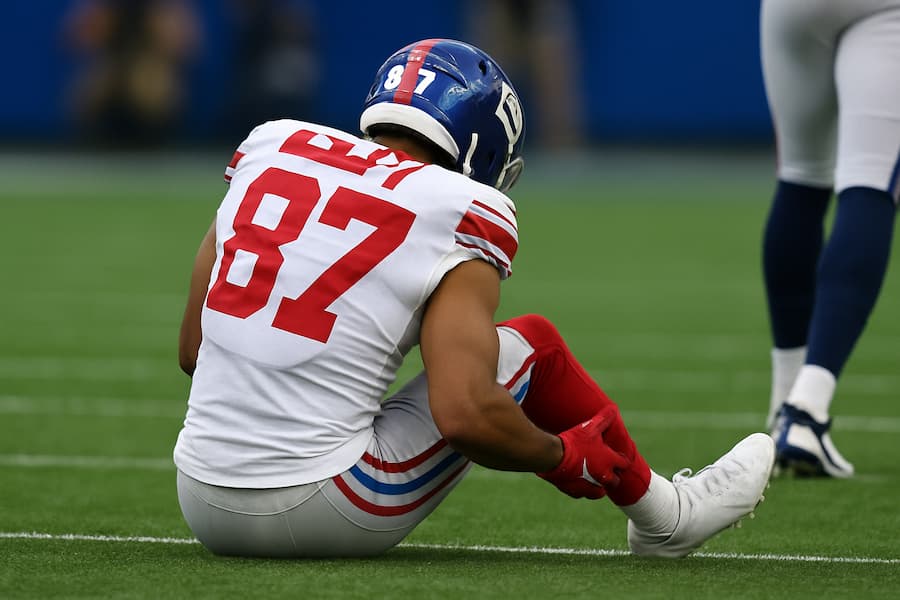
Turf vs. Grass: Why Money Wins Over Player Safety in the NFL
When New York Giants star wide receiver Malik Nabers suffered a major knee injury at MetLife Stadium, it reignited a debate that has been simmering for years: artificial turf. Since 2020, at least 15 players at MetLife alone—including Aaron Rodgers, Jaelan Phillips, Jabrill Peppers, Kyle Fuller, and Solomon Thomas – have suffered ACL or Achilles tears. Across the NFL, stars like Nick Bosa, Von Miller, Derrick Henry, Cam Akers, and Kyler Murray have also experienced season-ending injuries on turf surfaces.
For players and fans, the message seems clear: turf is dangerous. Yet NFL owners continue to install and maintain artificial fields. The reason isn’t ignorance—it’s economics.
Turf vs. Grass: The Safety Debate

Numerous studies suggest that natural grass is safer for athletes. ACL tears, ankle sprains, and other lower-body injuries occur more frequently on artificial surfaces. Positions requiring sudden cuts or heavy impacts—like linemen and wide receivers—are particularly at risk.
Players have voiced concerns repeatedly, arguing that teams are putting valuable human “assets” in harm’s way. Contracts worth tens of millions of dollars are at stake. On the surface, it seems logical: if turf increases injuries, why not switch to grass?
The Billion-Dollar Business of Turf
Here’s where the story gets complicated. Modern artificial turf isn’t the hard, unforgiving carpet of the 1960s. Today’s fields include specialized drainage, shock-absorbing layers, and climate-controlled infill systems. Installation costs range from $1–2 million, with replacement every 5–7 years. Maintenance is relatively low, making turf financially appealing over the long term.
Natural grass costs $300,000–500,000 to install, but requires extensive, ongoing care. This includes resodding, soil monitoring, fertilization, irrigation, mowing, and air circulation. For many teams, annual maintenance alone reaches seven figures—even without considering weather-related issues that can ruin the field.
Turf Makes Stadiums More Profitable

Artificial surfaces also allow stadiums to host more events. MetLife Stadium, for example, can hold roughly 40 major events per year, compared to just 14 for a grass field. The stadium hosted 23 concerts—including Taylor Swift’s shows—before even starting the NFL season. Non-football events bring huge revenue, including ticket percentages, concessions, merchandise, parking, and premium suites.
Over a 30-year lifespan, large-market artificial turf stadiums could generate $3 billion more than their grass counterparts. This revenue isn’t hypothetical—it directly impacts teams’ bottom lines, making turf a highly profitable choice.
Player vs. Owner: The Conflict

The debate isn’t about whether turf is safer—everyone knows grass reduces injuries. The challenge is aligning incentives. The NFLPA can present data, but half the league already uses grass fields, and players generally don’t want to sacrifice other benefits (like an extra game) for safer turf conditions.
Until the financial trade-offs favor safety, owners are unlikely to convert turf stadiums to grass. MetLife Stadium, for instance, would forfeit hundreds of millions annually if it reduced non-football events. The NFLPA has suggested metrics to measure turf performance and even revenue-sharing to offset injury costs, but these ideas haven’t yet been implemented.
Solutions Exist—If the NFL Invests
Some stadiums have shown that player safety and profitability can coexist. Real Madrid spent $140 million on a retractable grass pitch, and NFL teams like the Arizona Cardinals and Las Vegas Raiders use rolling field trays. These innovations allow multi-use venues to maintain grass surfaces without sacrificing revenue.
If the NFL invested in similar hybrid systems, it could reduce injuries while keeping stadiums profitable. The technology exists—it’s a question of willingness and long-term planning.
Conclusion

Artificial turf may save money and maximize revenue, but it comes at a cost: increased injuries for players. The debate boils down to incentives: players want safety; owners want profits. Until those priorities align, turf will remain a fixture in NFL stadiums.
Future innovation may offer a compromise, but for now, fans and athletes alike must contend with the risks—and hope the next generation of fields strikes the right balance between money and human health. Stay in the loop with the latest sports news U.S.A., covering every major league, team, and headline across the nation.